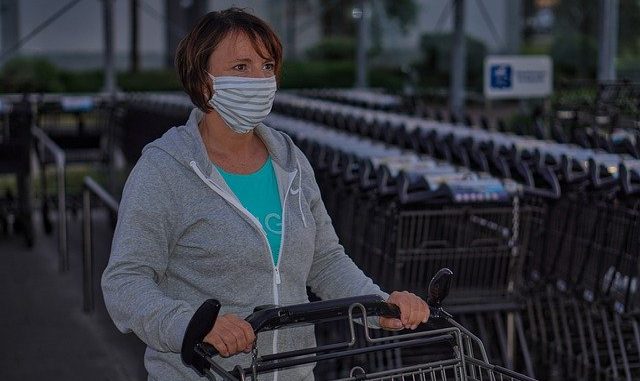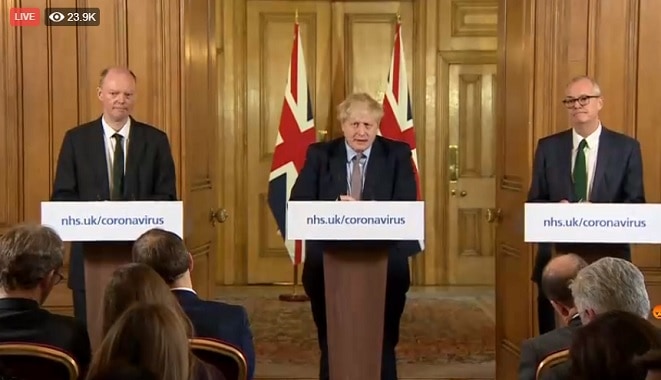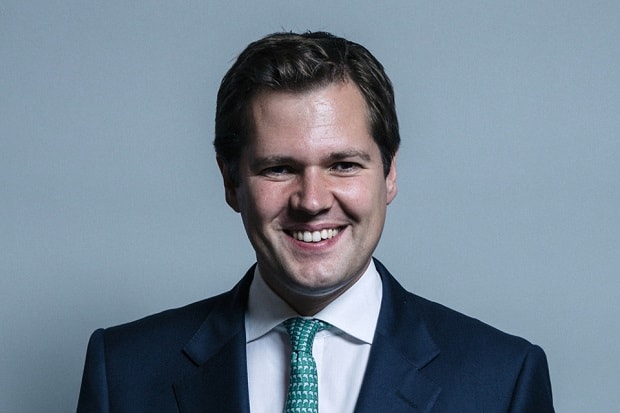
Data released by the Office for National Statistics of how many deaths attributed to Covid-19 have been registered by districts across the country show Thanet is suffering more losses than its East Kent neighbours.
The ONS information shows provisional counts of the number of deaths registered in England and Wales, including deaths involving the coronavirus (COVID-19), by local authority, health board and place of death up until April 24 – but registered up to May 2.
The data show Thanet has suffered 75 losses up to April 24, an increase of 24 losses since the previous ONS data for deaths by local authority that occurred up to April 17 but were registered up to April 25.
Deaths registered for people in Thanet show 44 people died in hospital, 25 in care homes, four in the hospice and 2 at home.

Losses in other East Kent districts for the same time period are registered as 41 for Ashford, 60 for Canterbury, 46 for Dover and 41 for Folkestone and Hythe.
The number of losses within care homes is higher in Thanet than any of its neighbouring East Kent districts.
Cllr Ian Hudspeth, Chairman of the Local Government Association’s Community Wellbeing Board, said of the rise in care home losses nationally: “This appalling loss of life in our care homes and communities is another stark reminder of just how much more must be done to protect our most elderly and vulnerable.
“Every death from this virus is a tragedy, leaving behind family and friends in mourning.
“Social care is the frontline in the fight against coronavirus and we need to do all we can to shield people in care homes and those receiving care in their own homes.
“Any national plans by government to track and trace coronavirus needs to build upon councils’ existing local knowledge and skills on the ground, given their experience in their communities through local services such as environmental health, public health including sexual health services and infection control nurses.
“We also cannot stress enough the urgency of making sure all of our social care and other frontline workers get the necessary PPE they need to protect themselves and the people they care for from contracting coronavirus.
“It is crucial that the Government’s online PPE ordering system is fully rolled out as soon as possible, so that councils and care providers can directly request that critical protective equipment gets to those who desperately need it.”
Impact of deprivation
A map recently published by the ONS with losses at a ward level showed Cliftonville West had lost 13 people to the virus up until April 17, far higher than any other Thanet area with the next highest number of deaths -five- registered in Broadstairs. The map is yet to be updated.

Ward councillor Alan Currie (pictured) said: “It is very sad to see confirmation that COVID- 19 has reached Thanet and residents have died.
“The numbers for Cliftonville West are particularly worrying and tells us that less affluent areas of Thanet with poor housing, overcrowding and ill health could be factors.
“I would urge all residents to adhere to government advice on social distancing and once the government gets its act together regarding testing we will all be able to manage our daily life in a safer way.”
The ONS says the impact of COVID-19 has been proportionally higher on those living in the most deprived neighbourhoods.
Thanet ranks as the most deprived local authority in Kent and has some 18 areas that are listed as among the 10% most deprived in the country, including Cliftonville West. The rankings are based on deprivation in areas such as education, employment, health, housing and crime.
However, wards with similar deprivation levels are Margate Central, with no registered deaths, and Newington, with two registered deaths, suggesting the higher rate of deaths in Cliftonville West may be influenced by factors such as the location of care homes as well as cramped living conditions, a higher than average number of Houses in Multiple Occupation (HMOs) and multi-generational homes.

Thinktank, the New Policy Institute says overcrowded neighbourhoods generate more Covid-19 infections than less-crowded areas, even after taking account of where the outbreak started, local deprivation and the passage of time.
NPI director Peter Kenway said: “Our models show that even when you allow for the obvious factors, there is still a heightened risk to overcrowded households, especially when you have older people living with younger people.”
Professor Gabriel Scally, president of epidemiology at the Royal Society of Medicine, said of Houses in multiple occupation: “I have no doubt that these kinds of overcrowded conditions are tremendously potent in spreading the virus.”
A lack of social distancing among some in the community has also been highlighted by Athelstan Road Tenants and Residents Association with reports of constant gatherings that are not dispersed.
Hospital Trust and national data
East Kent Hospitals Trust, including QEQM in Margate, William Harvey Hospital in Ashford and the Kent and Canterbury, has now registered 195 deaths attributed to Covid. More than 130 people have been treated for the virus and discharged from Trust hospitals.
As of today 4565 people in Kent and Medway have tested positive. In Thanet 532 people have tested positive.
Nationally:
- 1,448,010 tests for coronavirus have now been carried across Great Britain, including 69,463 tests carried out yesterday
- 201,101 people have tested positive, that’s an increase of 6,111 cases since yesterday
- 13,615 people are currently in hospital with coronavirus in Great Britain, down from 13,922 the yesterday
- And sadly, of those tested positive for coronavirus, across all settings, 30,076 have now died. That’s an increase of 649 fatalities since yesterday.
A road map for easing restrictions

On Sunday Prime Minister Boris Johnson is expected to outline a phased ‘road map’ plan for easing the current social distancing restrictions.
The easing will be based on the reduction of new positive cases and of those dying from the virus. The government says the UK is now past the peak and numbers are lowering but five key tests must be reached first:
These are protecting the NHS and its ability to cope, sustained fall in deaths,the infection rate is falling, the ability to overcome the operational and logistical challenges on testing and PPE and not risking a second spike that would overwhelm the NHS with nothing lifting the R or the reproduction rate of that disease back above one.

Today (May 6) communities secretary Robert Jenrick said: “The Prime Minister will set out on Sunday our approach the second phase of this pandemic.
“As we look ahead to supporting businesses as they are able to re-open, my department will lead our work on how our local economies can adapt, evolve, recover and grow. I will continue to support mayors and local government leaders, who will play critical roles in this work.
“Every local economy now needs a plan to re-start and recover. We will be informing those plans with our own detailed work in areas such as:
- How workplaces, from factories to construction sites to offices can be adapted.
- How outdoor spaces, leisure and businesses, from parks, to high streets, to markets can be managed.
- And how public transport networks, from the tube, to trams, to buses, can operate.
“In each case, guided by scientific and medical advice, we want to ensure appropriate and safe social distancing, providing the public with the confidence to return to work, and to return to public spaces, to public transport and to school, knowing that it’s always safe to do so.
“We are considering how we can create more room in the town centre for pedestrians. How we can make it easier to cycle or walk to work. And we will work with towns and places whose economies have been hardest hit intensively as the recovery begins. And our commitment to infrastructure investment remains undimmed. For example, over two thirds of HS2 sites are open.
“We want infrastructure and construction work to begin again wherever it is safe to do so.”
A similar plan has already been announced in Ireland. That plan is laid out below. It has not been confirmed whether the UK will follow a similar format.
Ireland’s plan for lifting COVID-19 restrictions on:
18 May (phase 1)
8 June (phase 2)
29 June (phase 3)
20 July (phase 4)
10 August (phase 5)
Phase 1 – May 18
Meeting small groups outside -Up to 4 people who don’t live together can meet outdoors while keeping at least 2 metres apart.
Funerals –The current restrictions will remain in place. Attendance at funerals is kept to a maximum of 10 people – and only members of the household, close family or close friends if the deceased has no household or family members.
Health and social care –There will be increased delivery of non-COVID-19 care and services alongside COVID-19 care
Childcare for healthcare workers – Childcare workers will provide care for the children of essential healthcare workers in the healthcare worker’s home.
Opening of schools and colleges- School and college buildings will be opened for access by teachers for organisation and distribution of remote learning.
People who work outdoors- A phased return of outdoor workers (for example: construction workers, gardeners, including people working on allotments) will be allowed. Social distancing requirements continue to apply.
Shops and other commercial businesses –Shops that are primarily outdoor (for example: garden centres, hardware stores, farmers’ markets) can re-open so long as social distancing measures can be put in place.
Shops that were previously open in Tier 2 (for example: homeware, opticians, motor, bicycle and repair, office products, electrical, IT, phone sales and repair) can open.
Sport and tourism- Outdoor spaces and tourism sites (for example: car parks, beaches, mountain walks) will be opened where people can move around freely and where social distancing can be maintained. Public sport amenities (for example: pitches, tennis courts, golf courses) can be opened where social distancing can be maintained.
People can exercise – either on their own or in a group of no more than 4 people – where social distancing can be maintained and where there is no contact with other people.
Phase 2 -June 8
Stay at home- The advice will be to still avoid unnecessary journeys wherever possible. You will be able to travel up to 20 kilometres away from your home as opposed to the 5 kilometre limit
Social visits- Up to 4 people may visit another household for a short period of time but everyone must keep at least 2 metres apart from people they don’t live with.
Isolating- Shops will provide dedicated hours for those who are over the age of 70 and those who are medically vulnerable with strict social distancing and gloves made available. Shoppers should ideally wear face coverings.
Those who are isolating can have a small number of visitors to their home. The visitors must wear gloves, face coverings and keep at least 2 metres away from the person who is cocooning.
Funerals- A slightly larger number of people can be in attendance at funerals but numbers will still be restricted to immediate family and close friends and limited to a maximum number of mourners (this number will be announced closer to 8 June) for a limited period of time where social distancing can be maintained.
Work- People who can work safely while maintaining a 2-metre distance from others
Workers, like those who work on their own, as well as other workers who can keep a 2 metre distance from others can return to work. Social distancing requirements continue to apply.
Plans to be put in place by employers and the government
Organisations are to develop plans for a return to onsite working by employees
Shops and other commercial businesses- Small retail outlets can reopen with a small number of staff on the basis that the retailer can control the number of individuals that staff and customers interact with at any one time.
Libraries- Public libraries may open so long as the numbers allowed in are limited, social distancing is observed and there is strict hand-sanitising in place for anyone who goes into the library.
Group exercise- People can take part in outdoor sporting and fitness activities, involving team sports training in small groups (but not matches) where social distancing can be maintained and where there is no contact.
Phase 3 – June 29
Stay at home- You should still stay at home as much as you possibly can. You can travel no further than 20 kilometres away from your home.
Childcare for essential workers- The opening of crèches, childminders and pre-schools for children of essential workers will take place in a phased manner. Social distancing and other requirements will apply.
Work- Organisations can open where employees have low levels of daily interaction with people.
Remote working is to continue for all workers or businesses that can currently do so.
Health and Social Care Services- Phased visiting will begin in hospitals, residential centres and prisons. Consideration will be given to the availability of personal protective equipment (PPE) and other protections.
Retail outlets- The opening of all other non-essential retail outlets will be phased in on the basis of a restriction on the number of staff and customers per square metre so that social distancing can be maintained.
This is to be limited to retail outlets with a street-level entrance and exit and does not include those in enclosed shopping centres due to higher risk.
Cafés and restaurants- Cafés and restaurants providing on-premises food and beverages can re-open. They must comply with social distancing and strict cleaning protocols.
Playgrounds- Playgrounds will be allowed to re-open where social distancing and hygiene can be maintained.
Sporting activities- Sporting activities and events can resume “behind closed doors”, where arrangements are in place to enable participants to maintain social distancing.
Travel restrictions- Travel restrictions may be implemented on numbers travelling to and in major urban centres on weekdays and weekend days.
Public and private transport –Public transport providers are to actively restrict and monitor passenger numbers to ensure compliance with social distancing.
Restrictions are to be implemented on numbers of private cars.
Specific measures will be introduced at ports and airports.
Phase 4 – July 20
Easing of stay at home – Travel outside your region and beyond the 20 kilometre restriction
Social visits –A slightly larger number of people may visit another household for a short period of time while maintaining social distancing.
Social gatherings – Small social gatherings by family and close friends will be allowed but are to be limited to a maximum number of attendees for a period of time where social distancing can be maintained (for example: small weddings, baptisms).
Other non-commercial social events –Small social (non-family) gatherings will be allowed but are to be limited to a maximum number of participants for a period of time where social distancing can be maintained.
Education and childcare- Crèches, childminders and preschools will open for children of all workers on a gradually increasing phased basis (for example, one day per week) and slowly increasing thereafter.
Work –Employees who cannot work remotely are to be considered first for a return to onsite working.
Depending on the business, measures such as shift work and staggered hours should be implemented to increase the numbers of workers available for work in any 24-hour period, as long as the business can limit the number of workers interacting with each other.
Remote working continues for all workers or businesses that can do so.
Retail- Restrictions can be gradually eased on higher risk services involving direct physical contact for periods of time between people and for which there is a population wide demand (for example, hairdressers).
Culture and places of worship- Museums, galleries, and other cultural outlets can be opened where people can move freely without coming into contact with others, social distancing can be maintained and strict hand hygiene is enforced on entry.
Places of worship can be opened with social distancing measures.
Sport- Competitions for sports teams (for example, soccer and GAA) can resume, but only where limitations are placed on the numbers of spectators and where social distancing can be maintained.
Public swimming pools can be opened where effective cleaning can be carried out and social distancing can be maintained.
Social and recreational- Hotels, hostels, caravan parks, and holiday parks for social and tourist activities can open, initially on a limited occupancy basis (or number of people per square metre), and then increasing over time. Social distancing measures are to be followed.
Hotel bars remain closed.
Transport and travel- Restrictions will gradually be decreased on the numbers travelling in major urban centres on public transport and in private cars.
Specific measures will be introduced at ports and airports.
Phase 5- August 10
Social gatherings- Some larger social gatherings can take place (for example, weddings). These will be restricted due to the risks involved.
Some large social (non-family) gatherings can take place – these will also be restricted.
Restricted movements- Continue to restrict all household contact of suspected cases, who are either awaiting test results or are in 14 days self-isolation.
Opening of schools and colleges- The following educational institutions can open on a phased basis at the beginning of the academic year 2020/21:
primary and secondary schools
universities
third level education centres
adult education centres
Health and social care services- There is to be a return to normal visiting for hospitals, residential healthcare centres, other residential settings and prisons.
Return to work- A phased return to work across all sectors.
‘Higher risk’ organisations which, by their nature cannot easily maintain social distancing, will implement plans for how they can progress towards the onsite return of a full staff complement.
Remote working continues for all workers or businesses that can do so.
Shops and other commercial businesses –Enclosed shopping centres can re-open, with social distancing in place.
A further loosening of restrictions for services involving direct physical contact for periods of time between people for which there is not a population-wide demand (for example, tattoo, piercing) for later phases due to risks involved.
Theatres and cinemas- Theatres and cinemas can re-open with social distancing in place.
Social- Indoor recreational venues, such as bowling alleys and bingo halls, can re-open where numbers can be limited, cleaning can be maintained, and social distancing can be complied with.
Pubs, nightclubs and casinos can re-open, where social distancing and strict cleaning can be complied with.
Festivals, events and other social and cultural mass gatherings can take place only in accordance with both indoor and outdoor number restrictions and where social distancing can be complied with.
Sport- Close physical contact sports, such as rugby and boxing, can resume.
Gyms, dance studios and sports clubs can re-open, only where regular and effective cleaning can be carried out and social distancing can be maintained.
Spectators can begin to attend live sporting events only in accordance with both indoor and outdoor number restrictions and where social distancing can be complied with.
Travel- Non-resident tourist travel to offshore islands can resume.
Social distancing and hygiene measures are to continue for public and private transport.

